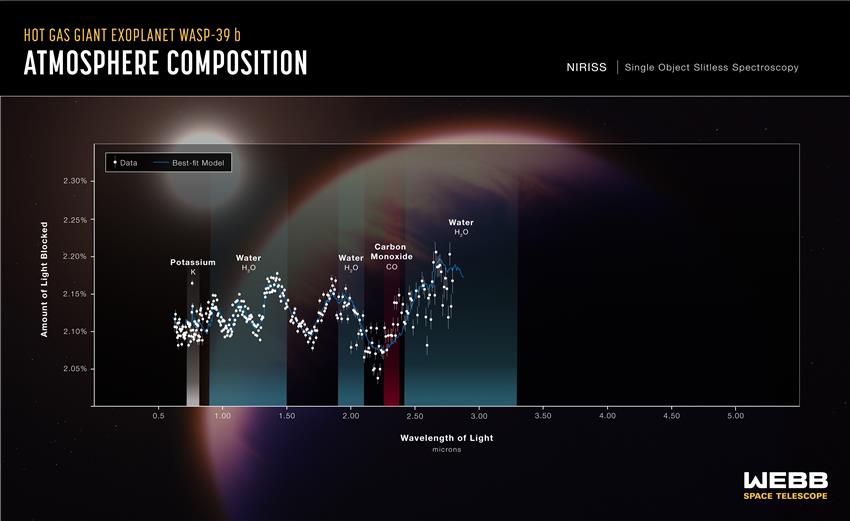With the help of its Canadian instrument, Webb detects exoplanet atmosphere in greater detail than ever before

A transmission spectrum of the hot Saturn WASP-39 b captured by the Canadian NIRISS instrument on the Webb Telescope reveals the signatures of many different chemicals in its atmosphere, including potassium, water vapor, and carbon monoxide. (Credit: NASA/ESA/CSA/J. Olmsted [STScI])
"Game-changer" data collected by the James Webb Space Telescope about the atmosphere of hot-Saturn exoplanet WASP-39 b reveals the presence of "a full menu" of chemical components.
An international team, which includes a group of Canadian astronomers at the Université de Montréal led by Prof. Bjorn Benneke, used Canada's NIRISS instrument and two others aboard Webb to identify a wide array of atoms, molecules, and signs of active chemistry and clouds in the atmosphere of the exoplanet which orbits a star roughly 700 light-years away. The same team revealed in that WASP-39 b's atmosphere contained carbon dioxide.
The complete data provides a molecular and chemical portrait of the exoplanet's atmosphere. The findings include the first-ever detection of sulfur dioxide, a molecule produced from chemical reactions triggered by ultraviolet light from the planet's parent star. This type of process, known as photochemistry, has never been observed outside the solar system until now.
Other atmospheric elements detected by Webb include sodium, potassium, and water vapour, confirming previous space- and ground-based telescope observations. Carbon monoxide was also detected: a new addition to WASP-39 b's roster.
The findings bode well for Webb's ability to conduct the broad range of investigations of exoplanets – planets around other stars – hoped for by the science community. That includes probing the atmospheres of smaller, rocky planets like those in the TRAPPIST-1 system.
To gather light from WASP-39 b, Webb tracked the planet as it passed in front of its star, allowing some of the star's light to filter through the planet's atmosphere. This starlight became imprinted with signatures hinting at the different chemicals found in the exoplanet's atmosphere. By studying this light through a technique called transit spectroscopy, astronomers determined the composition of the planet's atmosphere from hundreds of light-years away.